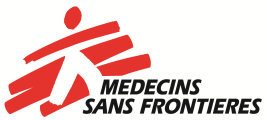This project is developing a toolkit for Médecins Sans Frontières (MSF) teams to harness social and digital technologies to better reach vulnerable displaced populations that face barriers in accessing health care.
Vulnerable populations face various barriers in accessing healthcare. Some of these barriers can be physical – for example, when a natural disaster or violence blocks the way to health care services, or when people are on the move and do not come across a health facility on their route. But some of the barriers to access and proximity are socio-cultural – for example, spiritual beliefs or mistrust in health care providers, which prevent people from seeking help.
At the same time, access to communication channels, internet, and social media is growing among MSF beneficiaries every day. New media technologies and social networks offer opportunities to rethink and explore the way MSF provides care and reaches populations who otherwise lack access to health services. Multimedia channels can bring MSF closer to the people, to support them even when we can’t be physically present, and to build a relationship where we can exchange information in familiar virtual spaces.
What is the solution?
MSF are exploring how they can use existing social networks and digital media to improve the quality of care and increase operational efficiency. The deliverables of this 18-month project includes a toolkit for field teams on how to use new media to engage with communities as a complementary operational strategy.
This video summarises the ambition of the project:
Find out more about the project HERE
This article is part of our theme area on Good Participatory Practice in COVID-19 Research
This work is licensed under a Creative Commons Attribution 4.0 International License



Please Sign in (or Register) to view further.